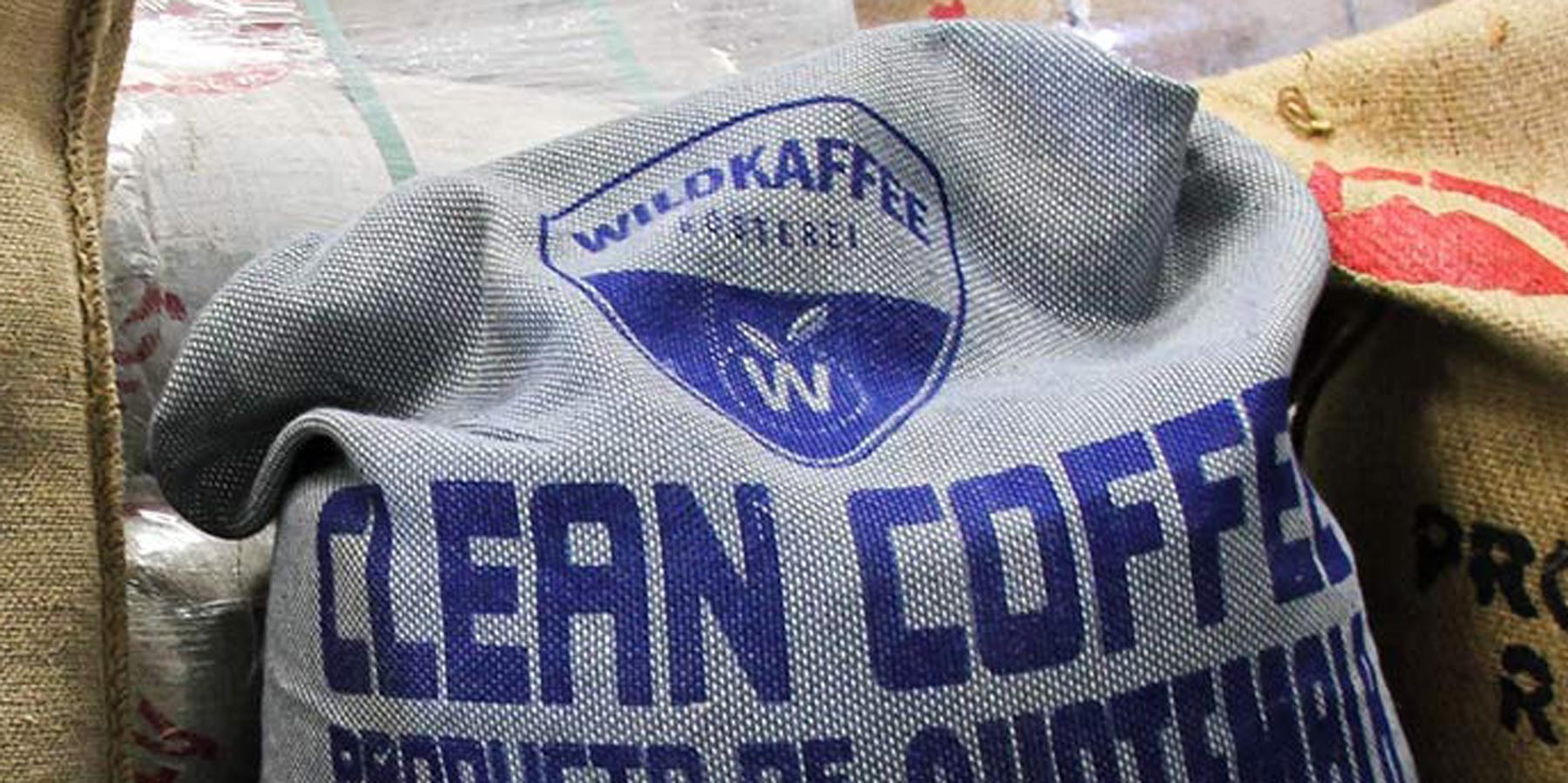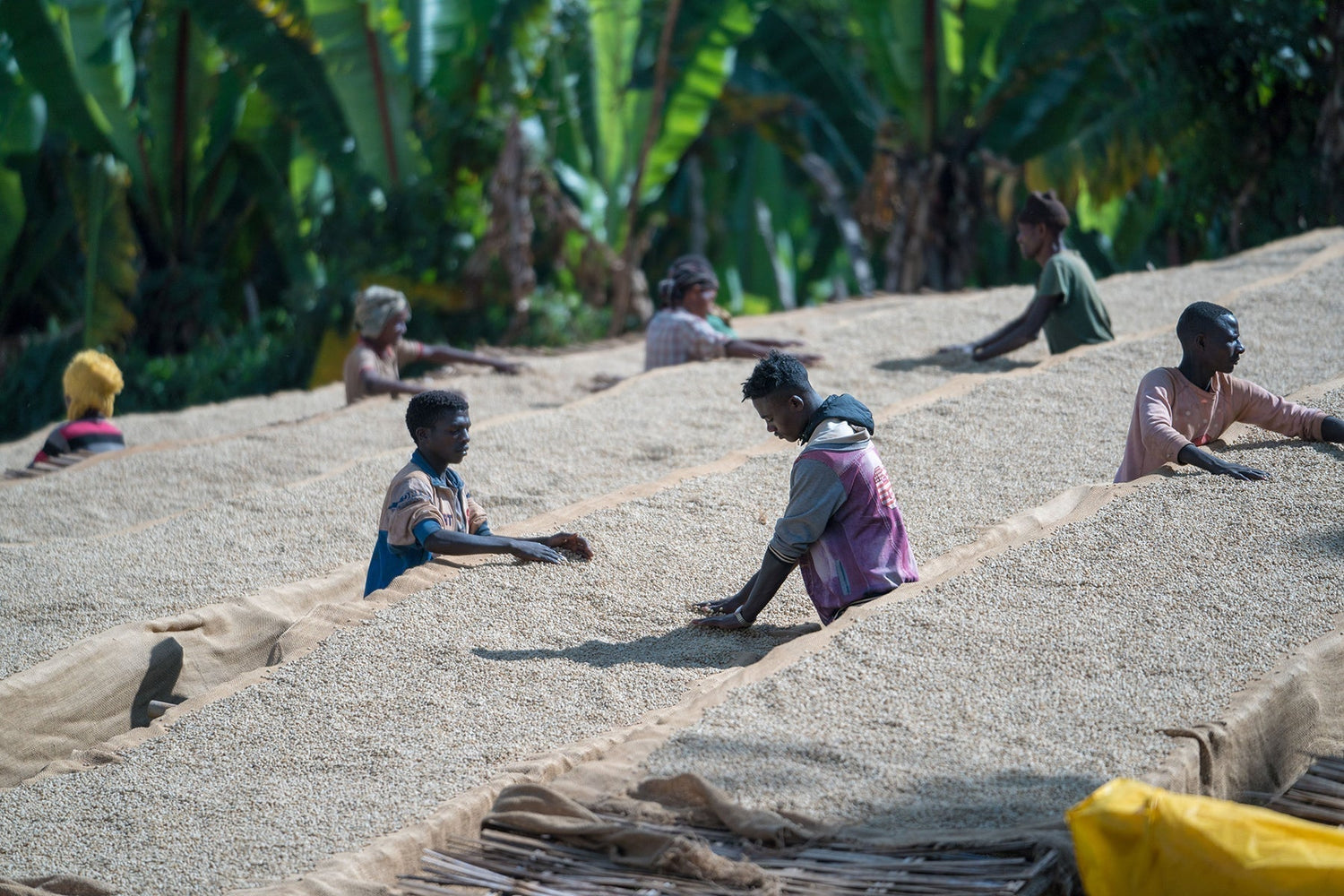Since the beginning of April, our coffee from Guatemala has been coming to us in new (old) clothes. Since the new harvest this year, the coffee is no longer packed in the usual jute sacks. Instead, the new coffee sacks are woven from recycled cotton .
The threads are made from used cotton and fabric scraps from jeans production. The scraps are spun into new yarn by the Guatemalan project The New Denim Project , which is then used to sew many great products. Including our coffee bags. We are really happy that the coffee in its new look finally arrived last week.
Upcycling - The New Denim Project
The New Denim Project is a family business from Guatemala that has been producing recycled yarn for four generations. When making jeans, there are a lot of small leftover pieces that would normally end up in the trash. The New Denim Project gives them a new lease of life. The yarns are not dyed any further, but remain as beautiful denim blue or whitish as they are. This gives products such as coffee sacks, towels, potholders, aprons, dog cushions, bags and many more a very appealing, clean look.
To perfectly round off the product cycle, we would like to produce more products from the used coffee sacks in the future. As soon as the time is right, we will let you know.

Upcycling & the circular economy
The New Denim Project lives and works according to the philosophy of the circular economy . According to this, products should be designed and manufactured in such a way that they can remain in circulation and be used for as long as possible. The manufacturing process should also generate as little waste as possible and resources, especially water, should be used as carefully as possible so that the impact on the environment is kept to a minimum.
How does the New Denim Project work?
The New Denim Project collects fabric waste from local clothing factories for the manufacturing process, sorts it, shreds it and spins it back into new fibers. The process is chemical-free, dye-free and uses little water and energy. No synthetic fibers (such as polyester, nylon, acrylic, etc.) are added. This allows new products to be created that are all 100% natural and compostable . The result is a cycle that is even supplemented by another use.

Upcycling - Fabric becomes fertilizer
The resulting cotton fluff and other leftover materials from the upcycling process are passed on to the coffee farmers at Finca San Jeronimo Miramar to be used as compost for coffee cultivation in Guatemala's highlands . The process is a symbol of a circular way of life in which the waste from one process can be a valuable basis and resource for a new one. This means that CO2 emissions, water and energy consumption, as well as the consumption of new raw materials, can be significantly reduced.
And how does one come to do business in this way? Let's look at the main part of industrial production to better understand why change is necessary.

Industrial production methods consume many resources
The clothing and textile industry's carbon footprint is significant. It accounts for 10% of global carbon emissions and is the second largest industrial polluter after oil. The industry's immense footprint goes beyond the use of raw materials. Greenhouse gas emissions from textile production amount to over 1 billion tonnes of CO2 . That's more than all international flights and maritime shipping combined.
Waste generation in the industrial textile industry
Today, consumers own three times more clothing than they did a generation ago and wear it on average just seven times before it is thrown out and often ends up in the trash. The keyword is fast fashion. It is not just a trend, but a sophisticated business model. Based on the extreme creation of trends that change and become obsolete at lightning speed, clothing is created that is not only not durable, but is downright degraded to disposable products.

Lowest prices tempt you to buy
Such fashion is so cheap that consumers don't have to think twice about whether they can and want to afford it. The price is paid by the cheap, mostly Asian workers , who often have to work under devastating conditions and, of course, the environment, which suffers from the numerous chemicals and waste water.
The majority of discarded clothes are not recycled
Of the 150 billion items of clothing produced each year, only 15% are recycled in any way . Most clothing scraps are used to make cleaning rags or insulation. Less than 1% of the material used to make clothing is recycled into new clothing.
Water consumption of clothing
production
The textile industry is one of the biggest wasters and polluters of water. It uses almost 100 billion cubic metres of water every year. This leads to further shortages, especially in areas where water is already scarce. 8,500 litres of water are needed to produce a pair of jeans, and 2,600 litres to produce a single T-shirt.
Colorful mix of chemicals
A quarter of the chemicals produced worldwide are used to make clothing. This starts with the fertilization of cotton. The high use of pesticides has serious health effects on both the pickers and all the surrounding ecosystems. The discharge of wastewater contaminated with chemicals into nature often makes production even more difficult. The dyeing and treatment of textiles leads to 20% of industrial water pollution worldwide .

Synthetic fibres migrate into the sea as microplastics
The cheap fashion mentioned above, which is constantly changing and ends up in the trash after wearing, is made of extremely cheap materials, namely various types of plastics, especially polyester. Almost 70 million barrels of oil are used every year to produce all of these polyester fibers, one of the most common materials used in clothing. More than 50% of clothing production uses polyester fibers. In the last 40 years, the amount of polyester used has increased more than tenfold.
Polyester - cheap fabric
Fast fashion can only exist because of the use of this cheap material. Polyester is neither biodegradable nor breathable and is also extremely energy-intensive. It is considered the biggest cause of microplastics in the sea, with all its catastrophic consequences for the environment and wildlife. It is estimated that around half a million tons of plastic microfibers end up in the ocean every year when plastic-based textiles such as polyester, nylon or acrylic are washed. They take more than 200 years to decompose. Such absurdly high numbers make you think and they have spurred the New Denim Project to act. Namely, to take action right there and use reused material to conserve all these resources.

Upcycling - The pinnacle of recycling
One effective method is so-called upcycling. This involves not only reusing materials, but making them into something better than before. This creates new value instead of waste, and products and materials remain in a cycle. This conserves natural resources and optimizes their yield. This can reduce environmental impact and the amount of waste. For every kilogram of textile waste that is reused for upcycling, up to 20,000 liters of water are saved. One ton of textiles that are upcycled saves 20 tons of CO2 emissions .
This type of production is very sustainable because chemicals and dyes are avoided and energy consumption is reduced. With the New Denim Project, we have found a reliable partner to make our contribution to greater environmental protection and resource conservation.
The icing on the cake will be our products, which we will have made from the empty coffee sacks. The plan is to have these manufactured as regionally as possible . As soon as we have found a suitable partner, you will hear from us again.
Until then, enjoy our coffee from Guatemala.


